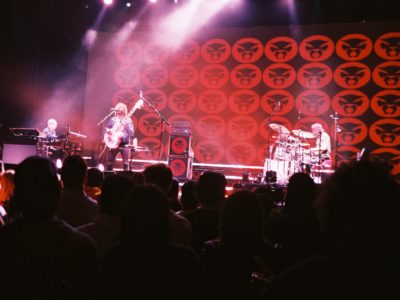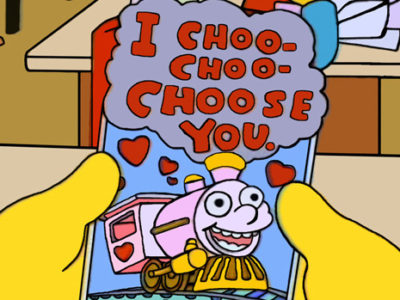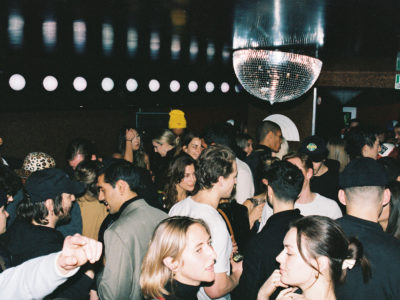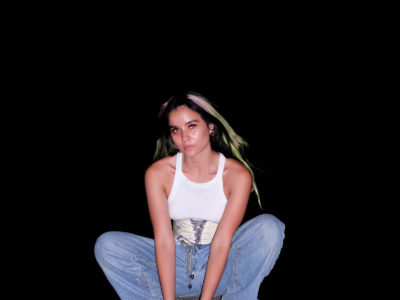
RAC and the power of EGO
RAC and the power of EGO
BY: ARIELA KOZIN
If you’ve ever been lucky enough to see a live orchestra, you’ve witnessed the show before the show. We’re talking about the warm up, when the musicians are tuning and the instruments playfully clash together—the violins hum haphazardly at the same time as the trumpets squeal and the restless audience settles in. There is something beautiful about the disarray; it excites us for what is yet to happen. Silence erupts next and so the precise, masterful orchestra begins.
RAC’s new album, EGO, begins with a recording of that giddy, jangly pre-show and it is quite fitting since what follows is a symphony of its own. Like a line of string performers have to work together to make one uniform sound, RAC’s Andre Anjos plays both a composer and a player with his ensemble cast. He leads a merging of talents, enlisting names like Rostam and Rivers Cuomo, to tell one thickly woven narrative about quick notoriety in the industry. All of these celebrated artists entrust RAC to bring the best out of their lyrics and vocals because after his debut album, Strangers, they’re confident that he would not release anything short of pristine.
Whenever we listen to an album, we inevitably have a standout favorite track. On EGO it is “This Song” featuring Rostam, not just because we’ve always loved Rostam’s pillowy soft vocals, but because the bubbly beats RAC offers play so nicely with Rostam’s voice. Because we’ve never heard Rostam sound so party-ready before and we’re going to guess the shift is thanks to his collaborator’s influence. However, we think “This Song” is best when it comes after “Unusual” featuring MNDR and before “No One Has To Know” featuring Joywave. Per suggestion by RAC himself, this compilation is best experienced in full, without distraction. That is why you’ll notice there is no pause between songs. Anyway, after their warm up, orchestras don’t take a break before the show is over, so why would he?
We were lucky enough to sit down with the artist and discuss the many layers of EGO. Read the interview in full below:

The cover art for this album is what first caught our attention. There’s a lot of symmetry throughout your art too. What’s the connection between the art and the album?
I’m glad you noticed that, because symmetry and architecture are actually really important to me— in my music, in the artwork, and pretty much everything in my life really. I’ve always been interested in the graphics side of things, in fact, when I was choosing a college to go to, I was actually torn between graphic design and music. I ended up going with music and my luck turned out one way, but I always wonder what my life would’ve looked like if I had gone down the other path. It’s always being an interest of mine.
I did not design the artwork for this album, we worked with a duo out of LA called Sing Sing. They’re awesome. They’ve been doing a lot of really interesting work. We got in touch and started talking about what this could be, what it would look like. What was cool was that I got to come into it with almost no ideas, like an open canvas. The album was almost done by the time we started working on this—I said, “Here’s what I have, check it out. How does it make you feel? What ideas do you have coming from this?” We went back and forth talking about the different concepts that I’m trying to tackle with this album, and this is a visual representation of that. What I personally like about it is it’s a physical piece of art. At first glance it looks like Photoshop, but if you look a little bit closer you can see the texture of the wood. And I think there’s an interesting parallel with my own music. I really strive for my music to be accessible on the surface, but if you want to dig in a little deeper, you start to see some texture and nuance. So that was an interesting parallel with what I was trying to do.
I really strive for my music to be accessible on the surface, but if you want to dig in a little deeper, you start to see some texture and nuance.
In a past interview you mentioned that it’s your most honest album, can you elaborate on that?
The last album was my first album, so I was kind of going into it as a learning experience. I wasn’t really sure who I was trying to be or who I was trying to sound like, I didn’t have clear goals with the album. I didn’t know how it was going to be received, there’s a lot of things, I think I was just coming to terms with being an artist. In the past I wasn’t really treated like an artist, I felt like one, but I wasn’t always treated that way.
Going into it, there was a certain amount of practicality that came with it. What I mean by that is, it’s pretty much a straight pop album. I’m very proud of the first album and I’m happy with it in the context of the time it came from, and where I was in my career. With this new one, it’s just more conscious about who I am and what I’m trying to achieve. This all sounds kind of nebulous, and it is kind of nebulous because it’s kind of distilling all my own personal influences, and especially since I’m in a situation where I don’t write my own lyrics. How do I convey these ideas that I have, in a way, through other people, but also through my own music and how do I get that across. When I say it’s more personal, I mean it’s a lot closer to what I truly care about musically. It just feels more like me. That’s why I called it EGO because that’s what it’s about. It was my way of processing a lot of the stuff that happened after the first album–a lot of it great, a lot of it not so great–but music is sort of my outlet in that way. It’s sort of my emotional outlet.
Since your collaborators contribute their own lyrics, where do you all come together? How did you even pick which artists you wanted to feature?
Yeah, I can even explain it in the context of the last one because I think it’s an important point to make. On the first album I called it Strangers because it was all done through the internet, so it was all done remotely. I would write a little demo here in my studio and then send it over, and then they would write on it and send it back, and we’d go back and forth that way. A lot of the people on that first album I still have not met to this day, which is kind of weird. This [album] was almost the opposite where most of the songs were done in person, in the same studio, at least the core of it. I guess I had a little bit more of a hands on approach when it comes to what they’re doing melodically, but also lyrically I got to chime in a little bit more. I do let the other collaborators and artists do their thing with the lyrics because it’s such a personal thing. I do believe that when you’re singing something you should truly mean it, and I think that comes through.
We’ve seen the darker side of music industry. If you’re not careful, a record label can dilute that art. How do you protect your creative vision when you bring in the business side of the album release and its roll out?
It’s a daily battle, the age old battle of art versus commerce. It really comes down to identifying what I care about most and sticking to it, and if that means losing money then that’s the price. I’ve always had this idea that if you want longevity in the music industry you have to kind of pave your own way, do your own thing, because I’ve seen even friends of mine completely chase trends and then soon enough their careers are over, and they wonder why. My whole approach has been within my own comfort zone and try to be myself and try to do what I do, and hope that people like it. Which sounds kind of weird, but it’s worked out for me so far. I do try to make my art accessible, but still have enough quirkiness and weirdness that makes me happy. It’s tricky it’s a daily thing for me.
It’s a daily battle, the age old battle of art versus commerce. It really comes down to identifying what I care about most and sticking to it, and if that means losing money then that’s the price.
You mentioned on social media that you’re purposefully playing small venues this upcoming tour because you miss the intimacy?
I kind of alluded to it earlier, but with the first album things got way bigger than I expected and suddenly we’re playing huge festivals and select clubs around the US. It was really exciting, but especially the first couple of tours where we were playing for 300-500 people, there was something to that. Something about that intimacy and feeding off of that crowd. There’s a point where it gets so big that you can’t see people individually, and I miss that. When we played Terminal Five in New York City to 3,500 people it was great and it looks great on photos and it was a fun, but there’s something to be said about playing a 500 cap room where you can actually see people.
You brought in so many people for this album but you manage to weave together a cohesive album. How did you manage that?
Singles are great and all, but the album is where you can say something interesting musically. It’s always been about the album for me. It was really important to me to make something cohesive that works as a whole. You can still listen to the songs on EGO individually if you want—throw it on shuffle—but it’s really meant to be experienced siting down from the beginning and finish it, or put it on the background when you work. That’s what I remember enjoying with albums growing up.
The whole album is exactly an hour long. I timed it. There’s no breaks, it just flows from one song to another, and there’s a lot of connective tissues and interludes. I wanted to make an experience where you sit down with the first song and you listen all the way through. So the songs are placed in an order that made sense to me, for example, certain songs with share different sounds and that’ll bleed over and make reference later in the album. The hope with this one is that when you sit down with it, it feels like a cohesive piece of music despite the wide variety of people who are featured on it.
EGO is available on July 14.
For more on RAC, visit his site and follow him on SoundCloud, Instagram + Twitter.





